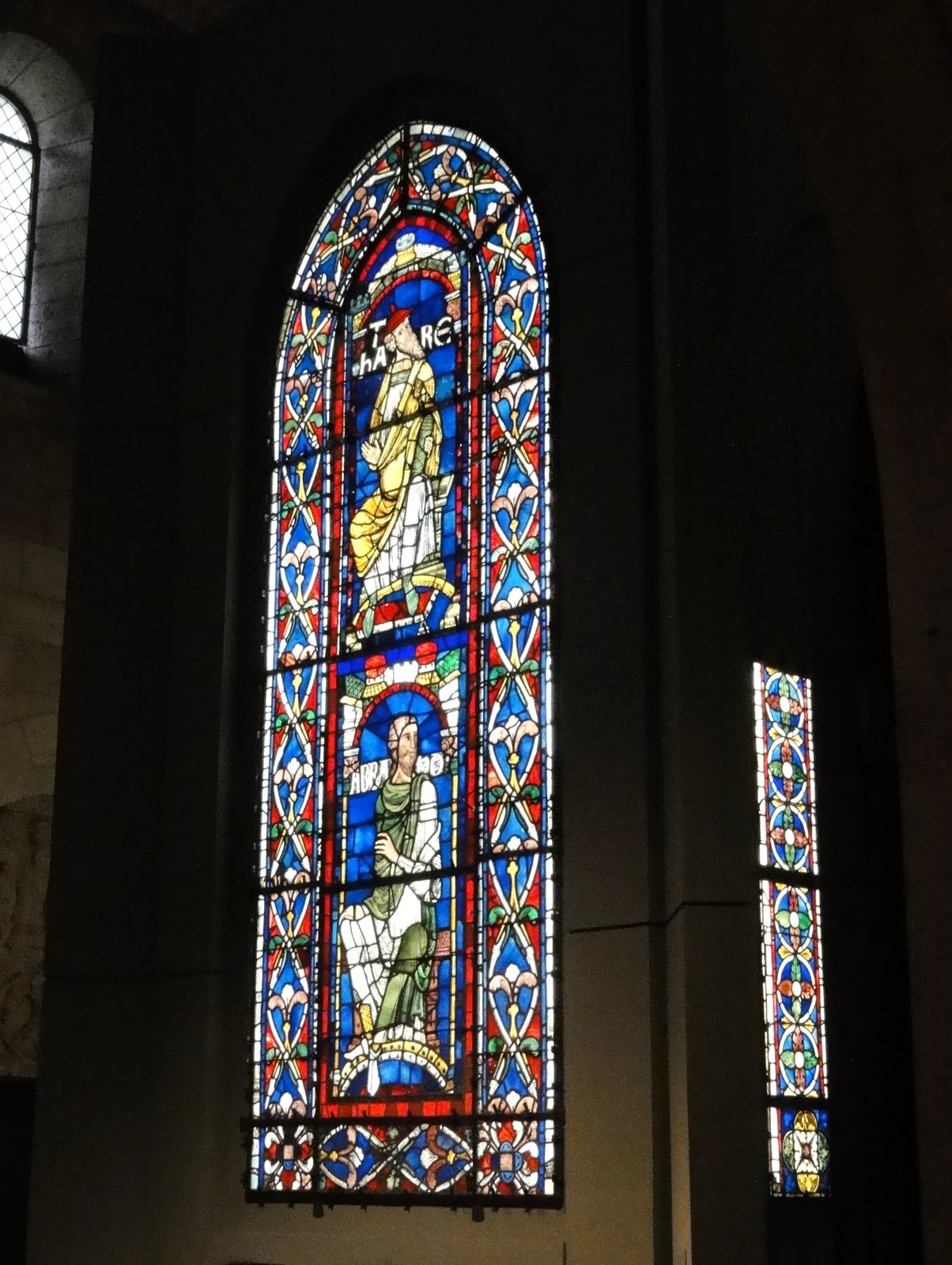Thursday, June 14, 2001, Rome:
The following
morning we left the hotel around noon (just as our friend, Carl K., was
arriving at the hotel from NYC) and took the metro to the Basilica of St.
Paul Outside the Walls, the second largest basilica in Rome after St.
Peter's. We remembered St. Paul's fondly from our previous trip,
when we had walked all of the way from the Jolly stopping at several more
churches and the Basilica of St. John Lateran. The exterior of St. Paul’s
is distinctive chiefly for the striking mosaic in the triangular pediment and upper story of the facade and for the huge colonnade in front which screens a lovely courtyard with a huge statue
of St. Paul.
 |
| Mosaic on the facade of the Basilica of St. Paul Outside the Walls, photo by Blomme-McClure |
 |
Entrance colonade and courtyard of the Basilica of St. Paul Outside the Walls with statue of Saint Paul,
photo by Blomme-McClure |
Inside, there is a grand nave (the second longest in Rome –
after St. Peter’s) ending in a massive arch in front of the altar with four
side aisles separated by long colonnades. They provide a rhythm which somehow
mutes the overall sense of grandeur and creates a more human scale lacking from
many Italian churches -- which often seem more intent on humbling worshippers rather than
welcoming them.
 |
Nave of the Basilica of St. Paul Outside the Walls
with the Tabernacle above the Tomb of Saint Paul designed by Arnolfo di Cambio,
photo by Blomme-McClure |
 |
South Cloister of the Basilica of St. Paul Outside the Walls built by Vassallatto in the 13th century,
photo by Blomme-McClure |
It was on our way to
St. Paul's at the metro interchange at Termini (the main train station) that we had a pick-pocketing
attempt. Three men crowded onto an
escalator – one in front of Doug, one between us and one behind George. Their plan was for the first one to drop
a package at the top of the escalator creating a diversion that would allow the two to each take one of our wallets. Doug
caught the one behind him with his fingers inside Doug’s pocket and gave him a
stern look. The guy behind George
succeeded in getting George’s wallet out of his pocket, but George yelled
“wallet, pick-pocket, thief” at the top of his lungs and the guy dropped the
wallet just at the top of the escalator.
We grabbed the thief between us (the one who had had his hand in Doug’s
pocket) just as a policeman arrived. His
two accomplices got away, but George’s wallet was there on the floor with
everything in it. The policeman, the
thief we caught, and the two of us went upstairs to a police station. We refused to press formal charges (too time
consuming and complicated) so the policeman took us back to the metro while the
thief was kept in the police station.
That evening, with
Carl K., we walked down the Via Veneto to Piazza Barberini, thence to the Trevi
Fountain, on to the Pantheon, and then via an unexpected route into the church of Sant'Andrea della Valle and on to the
Piazza Navonna -- which was crowded with tourists and locals enjoying the early summer evening in one of Rome's greatest public squares.
 |
Interior of the Pantheon built by the Emperor Hadrian in 126 A.D.,
photo by Blomme-McClure |
 |
Fontana del Pantheon from the portico of the Pantheon,
photo by Blomme-McClure |
 |
| Facade of Sant'Andrea della Valle by Carlo Maderno, photo by Blomme-McClure |
 |
| Interior of dome of Sant'Andrea della Valle by Lanfranco and Domenichino, photo by Blomme-McClure |
 |
Fountain of the Four Rivers by Bernini in front of Sant'Agnese in Agone by Borromini
Piazza Navona, photo by Blomme-McClure |
Much of central Rome has been reserved for pedestrians, which
means that all of these sights are less harrowing to get to, although they are all
crowded with tourists. After Piazza
Navonna we crossed the Tiber on the Ponte Umberto with the Dome of St. Peter’s
and Castel Sant’Angelo rising above the river on our left.
 |
| Dome of St. Peter's from Ponte Umberto, photo by Blomme-McClure |
 |
| Castel Sant'Angelo (Hadrian's Tomb) from end of Ponte Umberto, photo by Blomme-McClure |
After a lovely
dinner in the sidewalk café of Ristorant Antico Cavour (Piazza Cavour, Rome, 06
687 5065) on the lovely Piazza Cavour across from the monumental and ornate
Ministry of Justice, we took a taxi back to the hotel.



















































